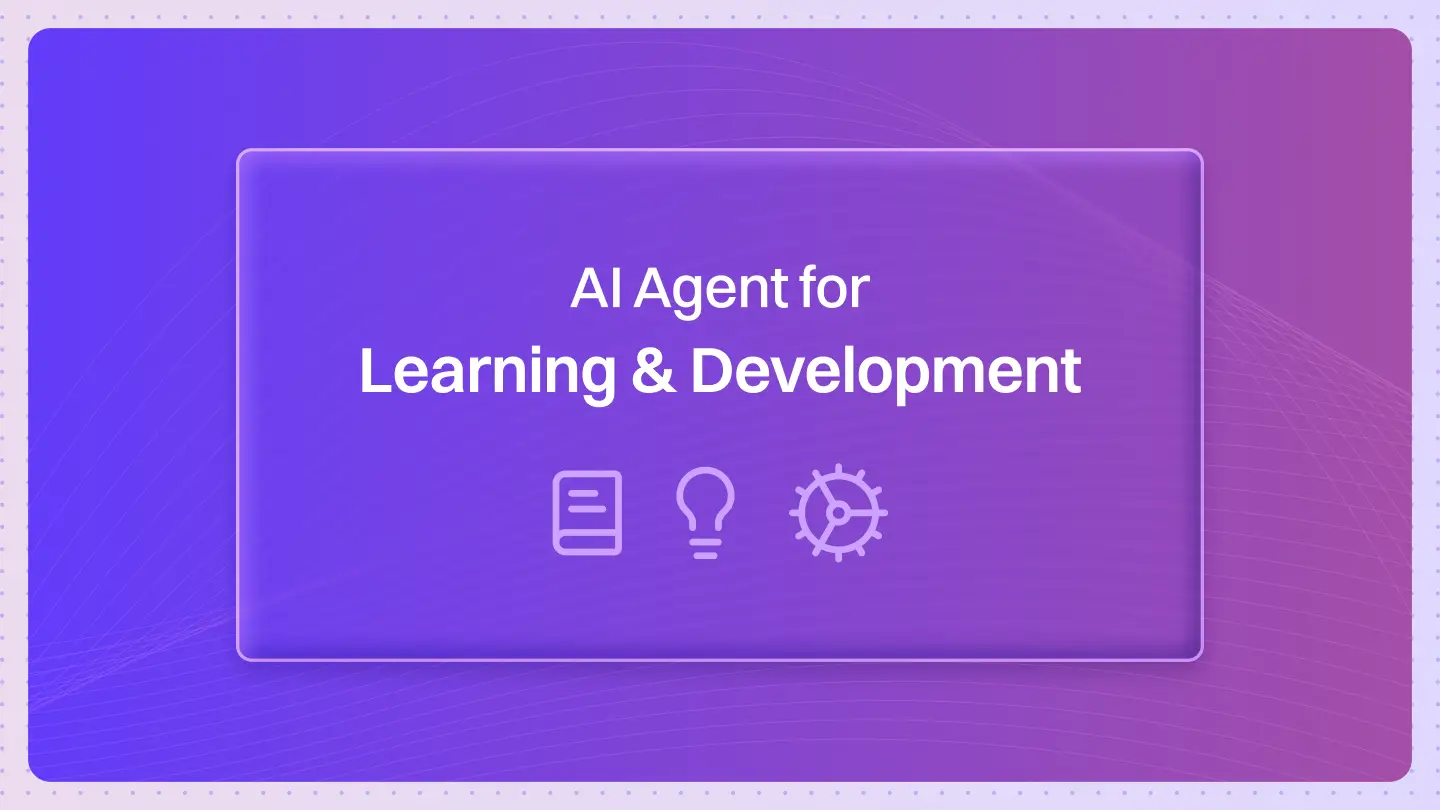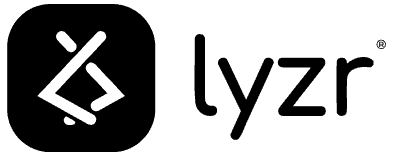Table of Contents
ToggleThink about your company’s policies for a moment. Not as protective shields, but as a wall of manually-wound clocks. Your HR handbook is one clock. Your data privacy policy is another. Your vendor management protocol, your remote work guidelines, your code of conduct… each is a separate clock.
Every new regulation, every market expansion, every shift in labour law is another clock to set, wind, and constantly monitor. The core of your compliance strategy is the exhausting, high-stakes effort of keeping them all ticking in perfect unison. One slip-up, one forgotten clock, and the alarm that sounds is a multi-million dollar fine.
Now, you might be thinking, “But we have compliance automation software. We’ve invested in platforms that give us templates and track updates. We’ve digitised the problem, haven’t we?”
That’s the conventional answer. But what if the tools you’re using are just faster ways of winding the clocks by hand? What if the real problem isn’t the speed of the task, but the intelligence an AI agent for policy generation provides? The real challenge is building a system that knows what time it is, everywhere, all at once.
It leaves them stuck in a cycle of costly, manual effort. Before we explore the new way, let’s be honest about the true price of the old one.
The High Cost of “Good Enough” Compliance
The problem with the old way of managing compliance isn’t just that it’s inefficient; it’s that it creates a slow, constant bleed of your most valuable resources: money, time, and strategic focus.
Let’s get straight to the numbers. The cost of non-compliance is, on average, a staggering 2.71 times higher than the cost of actually maintaining compliance. A landmark study by the Ponemon Institute found the average cost of non-compliance hits nearly $9.4 million, compared to $3.5 million for getting it right.
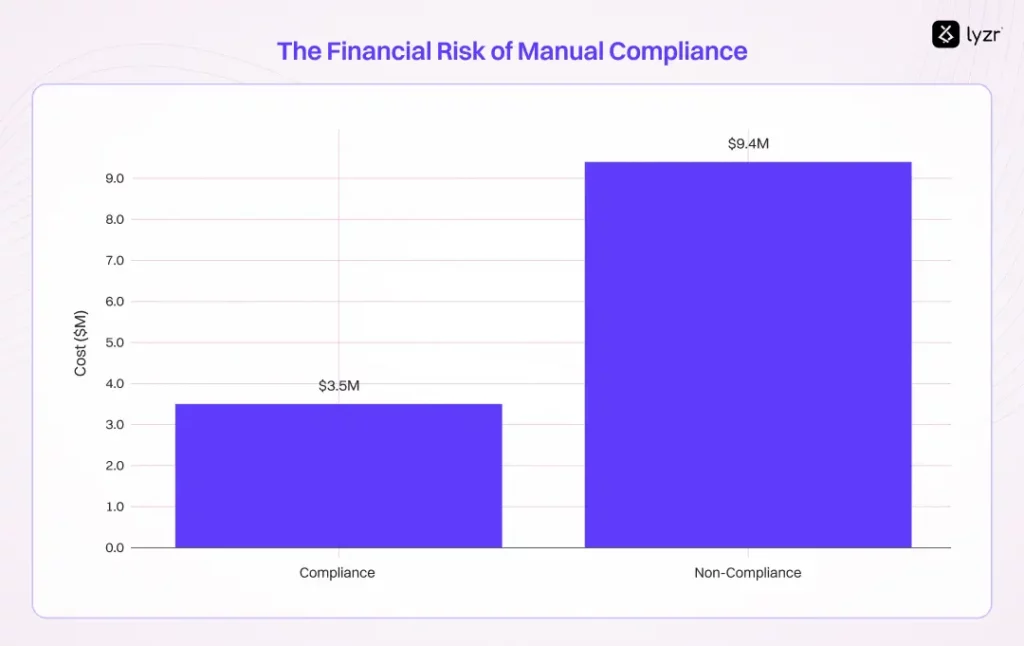
Data breaches that stem from compliance failures cost an average of $220,000 more than other breaches.
This isn’t just an enterprise problem. Small businesses report spending an average of $10,000 per employee on regulatory costs, with 73% of owners citing taxes and recordkeeping as a massive time sink.
Then there’s the time tax. Your best people, your legal and HR experts, are drowning in manual work. Senior managers spend up to 23 hours a week in meetings, many of them dedicated to governance and alignment. A Thomson Reuters report reveals that compliance professionals spend up to 52% of their time on manual monitoring alone.
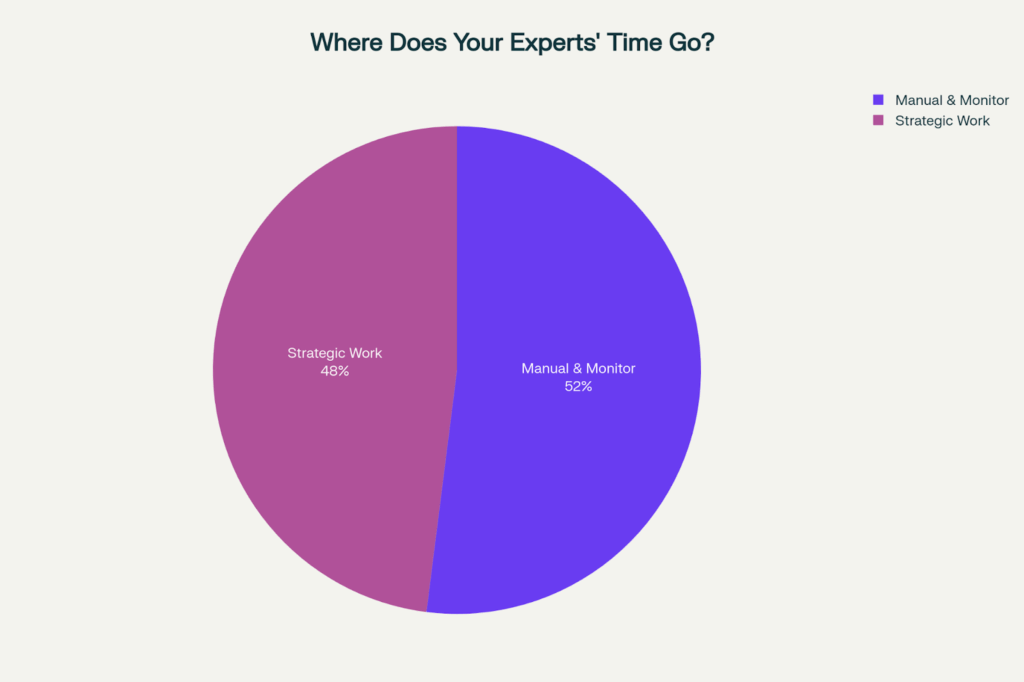
The financial and temporal drain of manual compliance is not just a line item on a budget. It is a ticking clock.
An outdated employee handbook, for instance, stops being a guide and becomes a legal liability. Courts increasingly view these documents as contracts, and a single outdated clause is often the key piece of evidence in lawsuits that cost an average of $125,000 to settle.
This points to a massive gap between our intentions and our reality.
Research from Economist Impact found that a shocking 85% of companies admit they lack the ability to implement the strategies they develop. We are writing perfect policies that our systems are incapable of keeping alive.
The true cost of compliance, then, is not what you spend. It is what you lose. It is the price of paralysis, measured in three distinct ways:
- Delayed Growth: Every new market you enter slowly.
- Slowed Innovation: Every product launch that is pushed back.
- Active Fear: Every new idea shelved because the organization is afraid of breaking a rule it does not even know has changed.
So, how do you stop managing compliance and start enabling the business to move forward?
The Automation Illusion: Why Your Policy Generation Tools Still Fail
The tools most companies use today are built on a brittle, outdated paradigm. They create an illusion of automation while preserving the manual, human-driven logic that causes the problem in the first place.
They Are Blind to Intent
These tools rely on keyword searches. A compliance officer searches for “fraud,” but a new regulation talks about “deceptive financial practices.” The system sees nothing. It is a security guard who can only spot a threat if the person is wearing a sign that says “threat.”
They Are Trapped by the Past
They are also built on rigid, “if-then” logic. “If a document contains ‘PII,’ then flag it.” This works perfectly until a new law redefines PII, or an employee describes it in a new way. The system is brittle. It is designed for a world that never changes, which is not the world we live in.
This brittleness is not a theoretical risk. It is an operational reality.
Before we explore how intent-driven agents solve this, it is helpful to see the difference. This three-minute video shows how Lyzr’s Responsible AI framework handles what these conventional tools cannot:
- Toxicity detection
- Prompt injection protection
- Autonomous policy enforcement across multiple agents at once
This is the shift from treating compliance as an afterthought to building it into the architecture itself.
And let’s be clear, the world of compliance is nothing but ambiguity.
The Shift to Intent-Driven Autonomy
This is where we need a new mental model. The old way is command-driven: “Step 1: Search for keyword X in database Y. Step 2: If found, alert person Z.” It requires a human to define every single step.
The new way is intent-driven: “Ensure we are compliant with the latest data privacy laws in our new European market”.
This paradigm shift, enabled by AI agents, moves the human operator from a low-level task manager to a high-level strategic director. You stop focusing on the “how” and start defining the “what”.
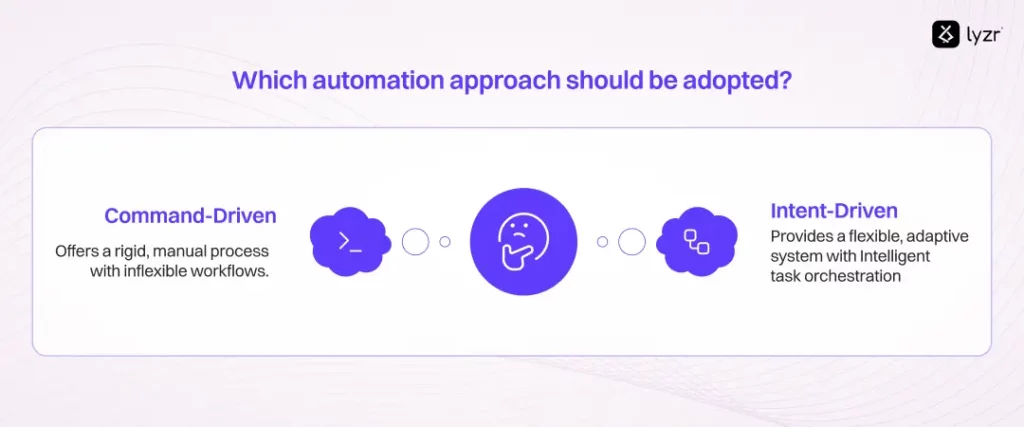
An AI Agent, powered by a large language model, understands your goal. It can then autonomously reason, plan, and orchestrate the necessary steps to achieve it.
This is the conceptual leap most compliance teams miss.
Watch this 60-second explainer on what autonomous agents actually do: they don’t follow instructions, they pursue objectives. They don’t execute workflows, they architect them.
The moment you grasp this distinction, the entire paradigm of policy management shifts from manual clock-winding to intelligent orchestration.
| Feature | Traditional Automation (Rule-Based) | AI Agents (Intent-Driven) |
| Core Logic | Follows pre-programmed, static rules. | Reasons, plans, and adapts to achieve a goal. |
| Interaction Model | Requires specific, step-by-step commands. | Understands high-level intent from natural language. |
| Adaptability | Brittle; fails when new scenarios arise. | Learns and adapts to new regulations and contexts. |
| Data Understanding | Keyword-matching; misses context. | Semantic understanding; interprets meaning and intent. |
| Operational Mode | Reactive; alerts after a rule is broken. | Proactive; monitors, anticipates, and prevents issues. |
| Value Proposition | Speeds up a manual task. | Automates an entire complex workflow. |
The Autonomous Policy Lifecycle: From Draft to Defense
So, what does this look like in practice? An AI agent transforms the entire lifecycle of a policy, turning it from a series of disconnected manual tasks into a single, autonomous workflow.
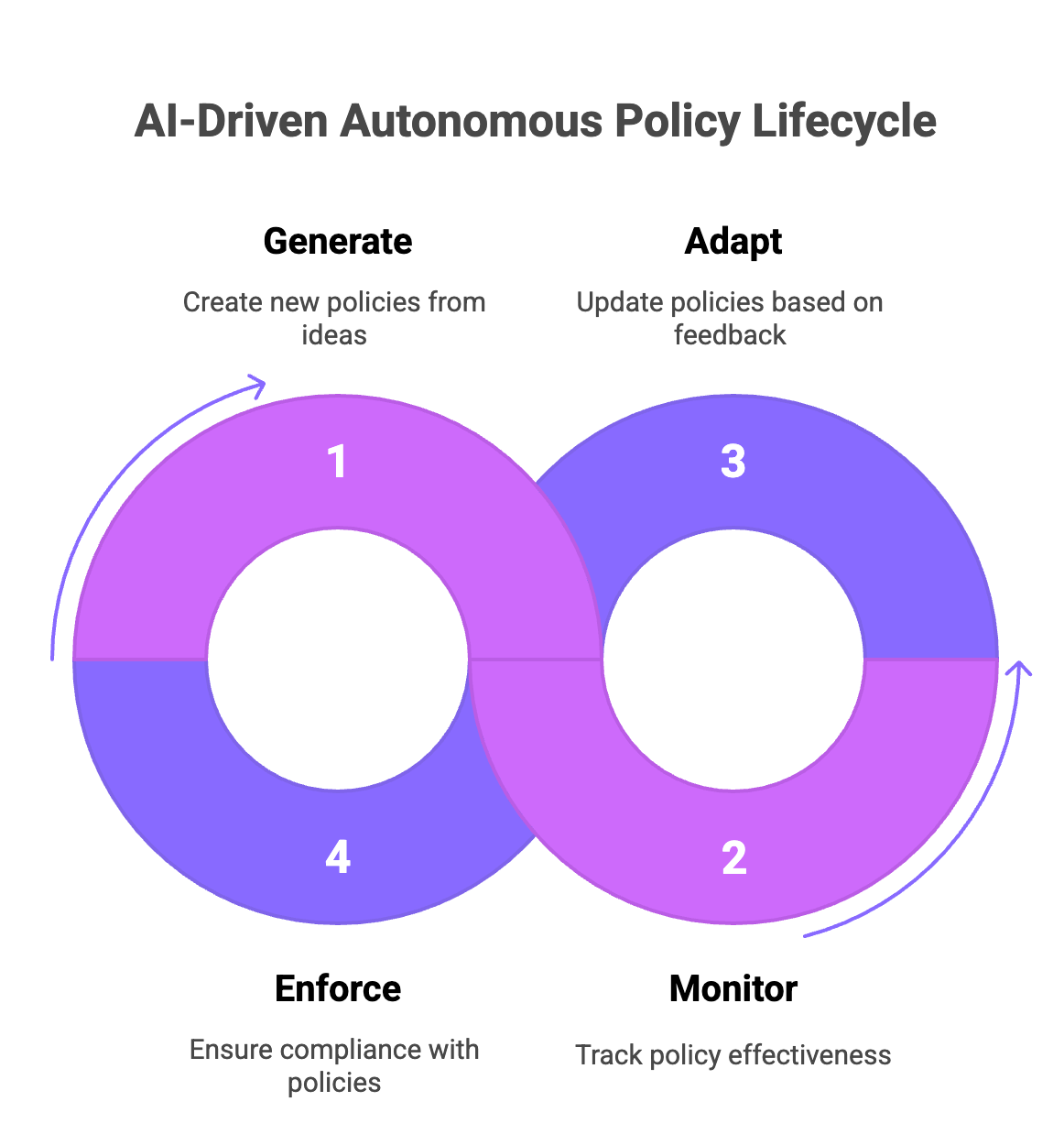
1. Generation: From Intent to Draft
An HR leader gives the agent a mission: “Draft a remote work policy for our New York team that meets state laws, reflects our value of flexibility, and secures company hardware.”
A normal tool provides a generic template. The agent does something different. It researches current New York labor law, analyzes internal documents to understand what “flexibility” actually means at your company, and synthesizes these inputs into a compliant, context-aware policy. The first draft is ready in minutes.
Now that the policy exists, how does it survive contact with the real world?
2. Monitoring: The 24/7 Watchtower
Once active, the agent connects to regulatory databases and legal update services. When a new government circular is issued, the agent does not just forward a link. It reads the update, understands its meaning, and identifies the specific clauses in your policy that are now at risk.
This is the shift from manual searching to automated awareness. But awareness alone is not enough.
3. Adaptation: The Living Document
Here, the agent moves from defense to offense. After detecting a regulatory change, it does not just send an alert. It proposes a solution.
The agent proactively drafts the new language for the affected policy and can route it to your legal team for a final review. The suggestion arrives complete with a summary of the change and the logic behind the new wording. Your policy evolves in near real-time.
Finally, how do you know the living policy is being followed?
4. Enforcement & Audit: The Internal Investigator
The agent turns its attention inward to provide a continuous, real-time audit. You can give it tasks like:
- “Scan all employee handbooks and flag any that lack the latest Q4 anti-harassment clause.”
- “Review database access logs and identify any patterns that violate our new data privacy policy.”
This creates an organization that is perpetually “audit-ready,” because the audit is always running.
| Metric | Manual Compliance Process | Autonomous Compliance (with AI Agent) |
| Time to Draft New Policy | 40-60 hours (Research, Draft, Review) | 2-4 hours (Prompting, Human Review) |
| Annual Monitoring Cost | ~500+ hours of senior staff time | Near-zero (Automated 24/7 scanning) |
| Risk of Non-Compliance | High (Human error, missed updates) | Low (Real-time alerts, proactive adaptation) |
| Average Cost of a Fine | $2.5M – $9.4M | Drastically reduced due to proactive measures |
| Productivity Impact | Drains HR/Legal from strategic work | Frees HR/Legal for high-value advisory |
| Strategic Impact | Creates “compliance drag,” slowing business | Enables faster market entry & strategic agility |
Meet Diane: The Super Agent Suite for Enterprise Governance
This vision of an autonomous policy lifecycle isn’t theoretical. It’s the reality being built today on Lyzr’s enterprise-grade agent framework. This platform provides the security, scalability, and integration capabilities necessary to move from concept to production.
But building individual agents to handle specific tasks is just the first step. True transformation happens when you orchestrate these agents to achieve complex business outcomes. This is the vision behind Diane, Lyzr’s Super Agent Suite.
From a Single Specialist to an Autonomous Team
Diane isn’t a single agent; it’s a coordinated team of specialized AI agents working in concert under a single, intent-driven command. Think of it as moving from hiring a single specialist to commissioning an entire, autonomous consulting firm.
How Diane Automates a Complete Strategy
Let’s apply this to our policy generation challenge. A Chief Human Resources Officer doesn’t just want to “draft a policy.” They want to “overhaul our global remote work strategy for 2026 to attract top talent while ensuring full legal and IT compliance.”
When you give this intent to Diane, it autonomously orchestrates a multi-agent workflow:
- A Research Agent is dispatched to scan and synthesize current and upcoming labor laws across all relevant jurisdictions, from New York to Bengaluru.
- A Policy Drafting Agent takes this legal research, analyzes your internal values documents and past HR communications, and writes a comprehensive, context-aware first draft.
- An IT Security Agent simultaneously reviews the draft, cross-referencing it with existing cybersecurity protocols and suggesting specific clauses for hardware management and data protection.
- A Communications Agent then generates announcement emails for different employee segments, creates an FAQ for the intranet, and even drafts a presentation for the leadership team.
The Leap from Task Automation to Strategic Automation
With a single high-level command, Diane manages the entire end-to-end process. This is the leap from automating a task to automating a strategy. It’s how you ensure all the “clocks on the wall” are not just wound correctly, but are designed and built to work together from the very start.
Your Policies, Reimagined
For decades, we’ve treated compliance policies as static documents, treating them as brittle artifacts that begin decaying the moment they’re published. This has to change. Your compliance posture can no longer be a dusty binder on a shelf, digital or otherwise. It must become a living, intelligent system, one that anticipates change, adapts in real-time, and defends your organization autonomously.
Automating the grunt work of compliance doesn’t replace your experts. It unleashes them. You free your best minds from the drudgery of digital paperwork to solve the human challenges that actually drive your business forward.
The journey from manual risk to autonomous governance begins with understanding what’s possible. See how Lyzr’s AI agent for policy generation can build this intelligent system for you. Book a demo to explore your use case.
FAQs
1. How does an AI agent ensure the legal accuracy of a generated policy?
An AI agent uses Retrieval-Augmented Generation (RAG) to ground its responses in facts. It pulls information directly from official regulatory documents, legal statutes, and your own internal knowledge bases to ensure accuracy. However, for final legal sign-off, Lyzr always recommends a “human-in-the-loop” approach, where a legal expert provides the final review and approval.
2. Is our company’s sensitive data used to train the AI models?
Absolutely not. Your data is your own. Lyzr’s agents are trained on general and legal language models, and then they access your specific, private documents at the time of a query. For maximum security, Lyzr offers on-premise deployment options and adheres to strict data privacy protocols like GDPR.
3. How does this integrate with our existing compliance software and document management systems?
Lyzr is designed for seamless integration. Using our robust Agent API, you can connect Lyzr agents to your existing tech stack, including HRMS platforms, document repositories like SharePoint, and other compliance tools, creating a unified workflow.
4. What is the role of our human compliance team with an AI agent in place?
The role evolves from manual operator to strategic supervisor. Your team will focus on high-value tasks: setting the strategic direction for the agents, reviewing and approving AI-generated suggestions, managing complex exceptions, and providing nuanced legal advice that requires human judgment.
5. Can the AI agent handle industry-specific and state-specific regulations?
Yes. The agent’s power lies in its customizability. Its knowledge base is built by feeding it the specific regulatory documents, circulars, and laws relevant to your industry and operating locations, whether you’re in finance, healthcare, or manufacturing.
6. How quickly can we deploy a regulatory monitoring agent?
With Lyzr’s pre-built agents and the no-code Agent Studio, a functional agent can be prototyped and deployed in minutes. A full enterprise integration, connecting to your specific data sources and systems, typically takes a few weeks.
7. What happens if the AI makes a mistake or “hallucinates”?
Lyzr’s documentation explains how our platform is built to minimize this risk. Our platform includes a Hallucination Manager and ensures that agent outputs provide direct citations and links back to the source documents, making every piece of information fully verifiable by a human reviewer.
8. How does the pricing work? Is it scalable for a large enterprise?
Lyzr offers flexible pricing plans that scale with your needs, from a Pro plan for growing teams to a full Enterprise plan that offers unlimited agents, dedicated support, and custom deployments. This ensures you only pay for the capacity you use.
9. What kind of audit trail does the AI agent provide?
Every action, query, data source, and decision made by a Lyzr agent is logged. This creates a comprehensive, immutable, and easily searchable audit trail that makes your organization ready for internal reviews or external regulatory audits at any time.
10. What is the difference between a single AI agent and the Diane Super Agent Suite?
A single agent is designed to execute a specific, complex task very well, like drafting a policy based on legal inputs. Diane is a ‘super agent’ that acts as a manager, orchestrating a team of these specialized agents. It allows you to automate an entire business strategy with a single, high-level command, moving beyond single-task automation.
Book A Demo: Click Here
Join our Slack: Click Here
Link to our GitHub: Click Here

